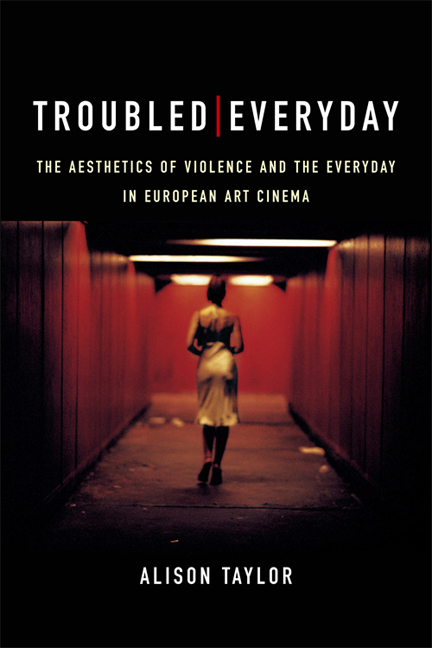4 - Everyday Structures/Everyday Language
Published online by Cambridge University Press: 22 December 2017
Summary
Why does the violence in films like this not only shock critics deeply but knock their critical faculty so far off balance? … What the critics seem to fear is contamination. The director is involved: if we respond, we become involved too. Violence is a vampire bite. (Charles Barr, ‘Straw Dogs, A Clockwork Orange and the Critics’, 26)
Released in 2001, Catherine Breillat's Fat Girl left many critics confounded. For eighty-one minutes of its eighty-six minute running time, the film is a quiet coming of age story of two teenage sisters. Unexpectedly, however, the film ends with a random act of violence: a bloody axe murder, strangulation and rape. This sudden turn to extremes incited a mixture of bewilderment and frustration in reviewers. Describing Breillat's move here as ‘an astounding misstep’, Bob Strauss (2001) of the Los Angeles Daily News states:
It's a gratuitously violent ending that comes so far out of nowhere, you can only imagine one of three excuses for it (and none of them good ones). Either Breillat simply couldn't figure out where her movie needed to go … or she somehow decided that her artistic signature requires strong doses of shocking sensationalism in every movie, whether they belong there or not; or, most probably as well as ludicrously, she's suggesting that all male predation operates on a reductive scale on which there is little space between seductive youthful dissembling, marital indifference and sheer monstrosity.
Katrina Onstad's (2003) review in the National Post also expresses frustration at the seemingly illogical rupture in narrative. Describing the moment at which Breillat ‘tacks on a five minute ending’ that undermines the otherwise careful neorealism of the film, Onstad finds the turn to violence ‘frustratingly – dangerously, even – open ended in meaning’, labelling it ‘an extreme cop out’. Similarly confused, Carla Meyer's (2001) review in the San Francisco Chronicle states that despite being ‘undeniably riveting, the scene is so out of step with Breillat's otherwise careful plotting that it comes off as a stunt’. For Peter Bradshaw (2001) of The Guardian, the violence constitutes ‘a shocking but empty gesture’, stating, ‘the effect of this grotesque eruption following what had been a very well-observed and well-acted human drama is baffling’.
- Type
- Chapter
- Information
- Troubled EverydayThe Aesthetics of Violence and the Everyday in European Art Cinema, pp. 60 - 88Publisher: Edinburgh University PressPrint publication year: 2017



